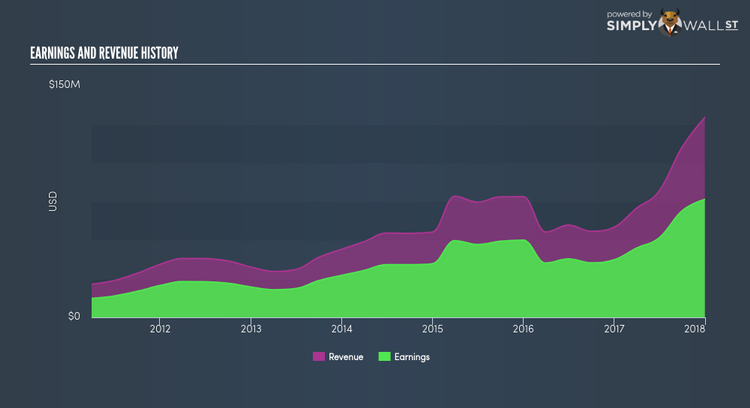Can Texas Pacific Land Trust (NYSE:TPL) Improve Your Portfolio Returns?

For Texas Pacific Land Trust’s (NYSE:TPL) shareholders, and also potential investors in the stock, understanding how the stock’s risk and return characteristics can impact your portfolio is important. Every stock in the market is exposed to market risk, which arises from macroeconomic factors such as economic growth and geo-political tussles just to name a few. This is measured by its beta. Not every stock is exposed to the same level of market risk, and the broad market index represents a beta value of one. A stock with a beta greater than one is expected to exhibit higher volatility resulting from market-wide shocks compared to one with a beta below one.
View our latest analysis for Texas Pacific Land Trust
What does TPL’s beta value mean?
Texas Pacific Land Trust has a beta of 1.09, which means that the percentage change in its stock value will be higher than the entire market in times of booms and busts. A high level of beta means investors face higher risk associated with potential gains and losses driven by market movements. Based on this beta value, TPL will help diversify your portfolio, if it currently comprises of low-beta stocks. This will be beneficial for portfolio returns, in particular, when current market sentiment is positive.
Does TPL’s size and industry impact the expected beta?
TPL has a market capitalization of US$4.05B, putting it in the category of established companies, which are found to experience less relative risk compared to small-sized companies. However, TPL operates in the diversified financial industry, which has commonly demonstrated strong reactions to market-wide shocks. As a result, we should expect a low beta for the large-cap nature of TPL but a higher beta for the diversified financial industry. This is an interesting conclusion, since its size suggests TPL should be less volatile than it actually is. A potential driver of this variance can be a fundamental factor, which we will take a look at next.
Can TPL’s asset-composition point to a higher beta?
An asset-heavy company tends to have a higher beta because the risk associated with running fixed assets during a downturn is highly expensive. I test TPL’s ratio of fixed assets to total assets in order to determine how high the risk is associated with this type of constraint. Considering fixed assets account for less than a third of the company’s overall assets, TPL seems to have a smaller dependency on fixed costs to generate revenue. As a result, the company may be less volatile relative to broad market movements, compared to a company of similar size but higher proportion of fixed assets. This outcome contradicts TPL’s current beta value which indicates an above-average volatility.
What this means for you:
You may reap the gains of TPL’s returns during times of economic growth by holding the stock. Its low fixed cost also implies that it has the flexibility to adjust its cost to preserve margins during times of a downturn. I recommend analysing the stock in terms of your current portfolio composition before deciding to invest more into TPL. What I have not mentioned in my article here are important company-specific fundamentals such as Texas Pacific Land Trust’s financial health and performance track record. I highly recommend you to complete your research by taking a look at the following:
Financial Health: Is TPL’s operations financially sustainable? Balance sheets can be hard to analyze, which is why we’ve done it for you. Check out our financial health checks here.
Past Track Record: Has TPL been consistently performing well irrespective of the ups and downs in the market? Go into more detail in the past performance analysis and take a look at the free visual representations of TPL’s historicals for more clarity.
Other High-Performing Stocks: Are there other stocks that provide better prospects with proven track records? Explore our free list of these great stocks here.
To help readers see pass the short term volatility of the financial market, we aim to bring you a long-term focused research analysis purely driven by fundamental data. Note that our analysis does not factor in the latest price sensitive company announcements.
The author is an independent contributor and at the time of publication had no position in the stocks mentioned.

